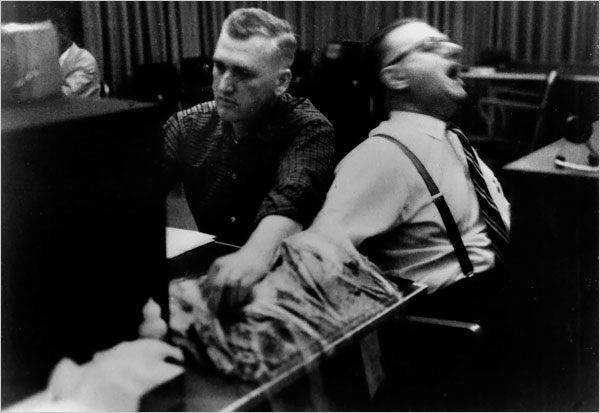TV prank condemned
The TV show Candid Camera provoked a national controversy on this day in 1963, with a prank that was ‘in the worst possible taste’ (The Times) and showed the British to be ‘a nation of potential collaborators’ (Daily Herald).
The idea came from a groundbreaking experiment by the psychologist Stanley Milgram at Yale University. This would achieve word-wide notoriety with the publication of his findings later that year, but at the time it remained largely unknown.
Milgram’s experiment showed that subjects were prepared to administer electric shocks to a third party, if ordered to do so by a person in authority. When reassured that they would not be held responsible, the subjects delivered increasingly severe shocks, even when the person receiving them could be heard screaming in pain and warning that he suffered from a heart condition.
Candid Camera’s version differed in several important ways. The setting was now a police station, and members of the public were asked to help with a trial run of a ‘new interrogation machine’. They were informed that the person receiving the shocks was a ‘nasty piece of work we’ve had our eye on for some time’, and told they would be ‘doing society a favour’.
Most declined to take part, but a minority volunteered with obvious enthusiasm. A librarian called Anthony Seaton repeatedly turned the knob to the ‘danger’ level without being asked to do so, and others clearly relished the role of torturer.
The moment for which the show will be forever remembered came when Ethel Meade, an otherwise perfectly ordinary pensioner, offered to kill the suspect ‘by accident’. This became one of the most requested clips in the history of British television, and remains a YouTube stable to this day. Meade became something of a celebrity, and even appeared in a humorous advertisement for Shok-Gard electrical tape. She was struck by lightning in 1968, but survived her injuries and went on to live for another twelve years.




























